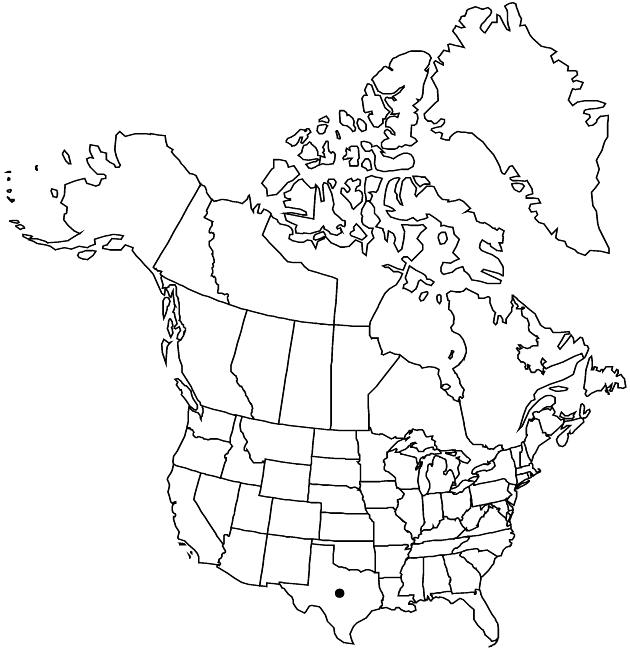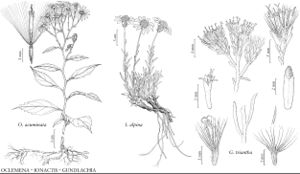Gundlachia triantha
Sida 21: 248. 2004.
Common names: TransPecos goldenshrub
Illustrated
Basionym: Haplopappus trianthus S. F. Blake J. Wash. Acad. Sci. 28: 485. 1938
Synonyms: Ericameria triantha (S. F. Blake) Shinners Xylothamia triantha (S. F. Blake) G. L. Nesom
Treatment appears in FNA Volume 20. Treatment on page 85.
Stems terete, finely sulcate, highly branched, bark tan becoming gray, twigs mostly green, minutely ridged, papillate-scabrous. Leaves ascending to spreading, sulcate adaxially, 5–20 × 0.5–1 mm; axillary fascicles sometimes present. Phyllaries 3–6 × 0.8–1.5 mm, mostly chartaceous, midveins enlarged distally, evident as green to brown patches, apices acute. Disc corollas 5–6 mm, tubes glabrous or puberulent, lobes 1–2.5 mm; style branches 2–2.5 mm, appendages 1.2–1.5 mm. Cypselae 3–4 mm, hairy; pappi 4–6 mm. 2n = 18.
Phenology: Flowering late summer–fall (or with adequate rain).
Habitat: Often in gypseous, calcareous, saline, or gravelly soils
Elevation: 700–1500 m
Distribution
Loading map...

Tex., Mexico (Chihuahua, Coahuila, Durango, Nuevo León).
Discussion
Selected References
None.
Lower Taxa
None.
